This page has information and activities about:
Watch a short video, which also describes these activities:
1. Working towards head control
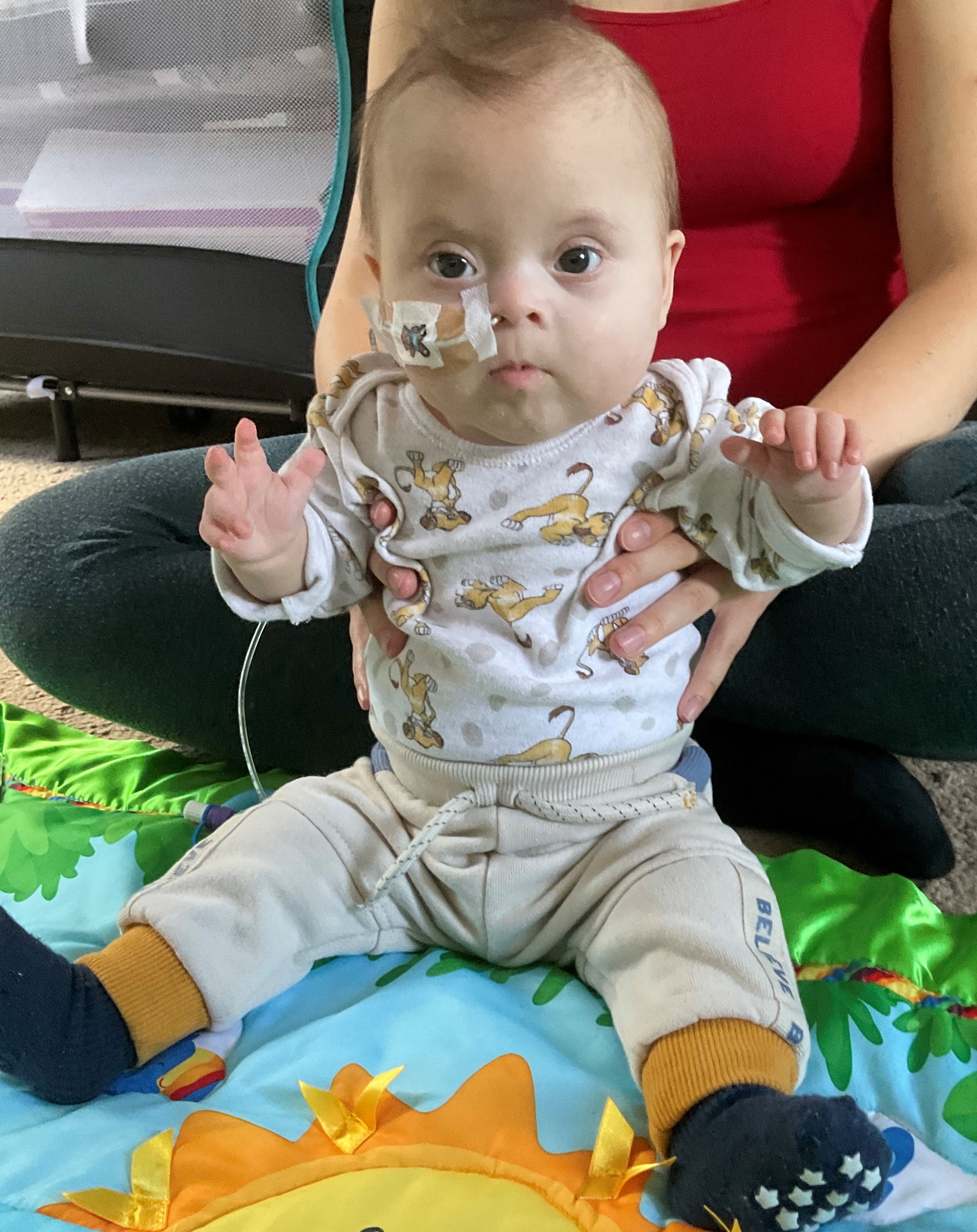 Initially, your child will only be able to sit in a fully supported, semi-reclined position. This is how they sit in car seats or baby bouncer seats. This is a great position for them to be in for short periods when they are awake so you can interact with your baby and let them get to know your voice and face.
Initially, your child will only be able to sit in a fully supported, semi-reclined position. This is how they sit in car seats or baby bouncer seats. This is a great position for them to be in for short periods when they are awake so you can interact with your baby and let them get to know your voice and face.
- Your baby needs to develop some head control before they can sit with less support. This is best achieved through lots of tummy time!
- When placing your baby on their tummy, it is helpful to give them a little lift. At first you may need to give them support with a rolled up towel or tummy time cushion under their chest as in Image 1.
- As your baby starts developing control, you will be able to place them on their forearms – aim for the elbows to be directly below their shoulders when positioning them as in Image 2.
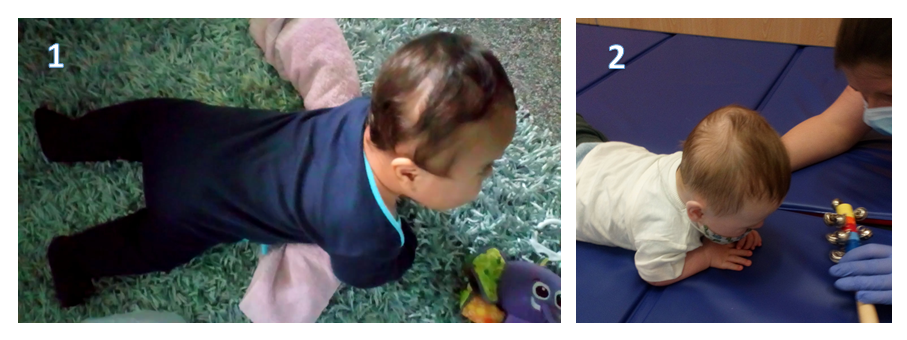
- If your baby does not like tummy time then try it with them lying on your chest. Start in a semi-reclined position and, as your baby’s head control improves, you can become more reclined. This is a lovely opportunity to spend time interacting face to face, and your baby will be comforted by this closeness. For extra bonding when they are little, do this skin to skin.
Babies should only be placed on their tummy for playtime, and should be placed on their back for sleep. Do not leave your baby unattended when lying on their tummy.
2. Working towards rolling
Here are four activities to help your child work towards rolling:
Head turn
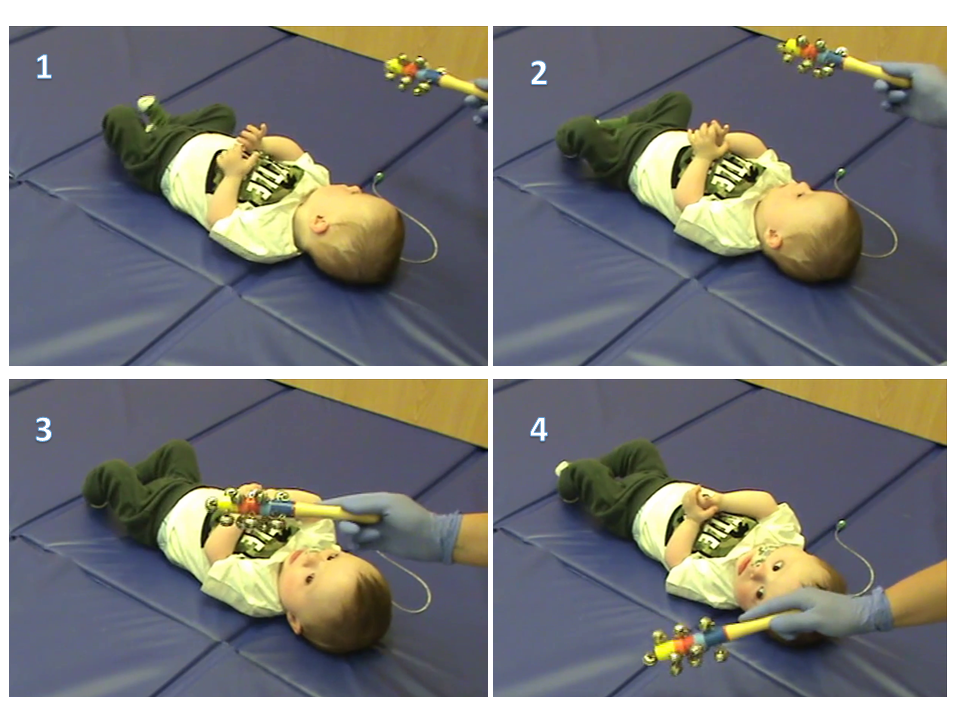 Encourage active head-turning from one side to another by drawing their attention to a toy, or your face, and move it in a half circle from one side of your child’s head to the other. Initially they will not track all the way over but you may encourage them to move their head to midline and then encourage a turn to the other side.
Encourage active head-turning from one side to another by drawing their attention to a toy, or your face, and move it in a half circle from one side of your child’s head to the other. Initially they will not track all the way over but you may encourage them to move their head to midline and then encourage a turn to the other side. - Once your child is at a stage of moving their head from one side to the other more freely, they will likely hold their head in midline most of the time.
N.B. If you find that your child has developed a preference for turning their head to one side, you should encourage and assist head turn to the other side regularly. If it does not resolve within a couple of weeks then please seek advice from a GP or physiotherapist.
Hands together
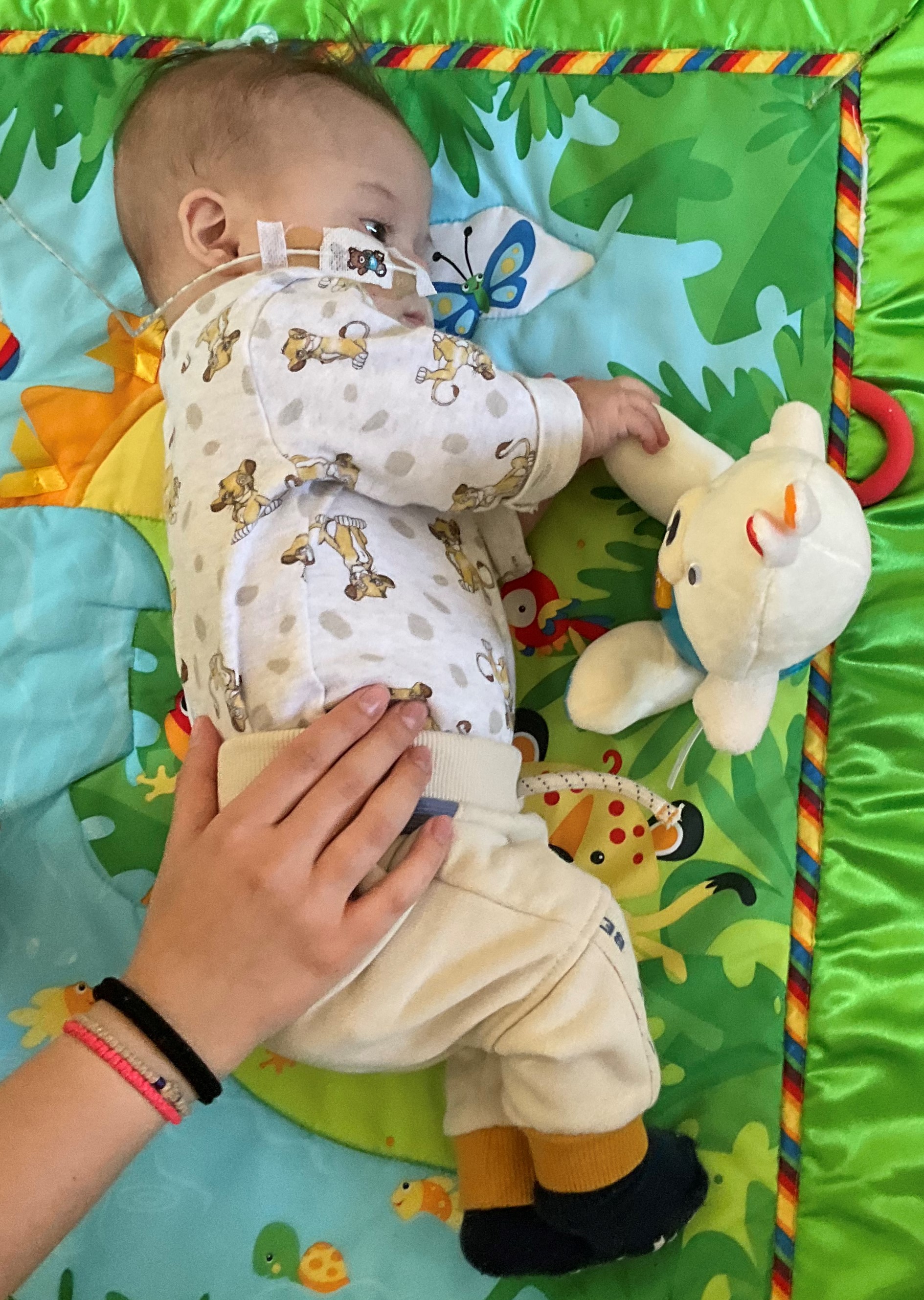 An important progression of movement skills is bringing hands together.
An important progression of movement skills is bringing hands together.
This shows a developing ability to move against gravity and allows one side of the body to discover the other side.
- You can assist the development of this skill by placing your child in a supported side-lying position as shown in the image
- This way, they can bring their hands together without the weight of gravity.
Batting toys
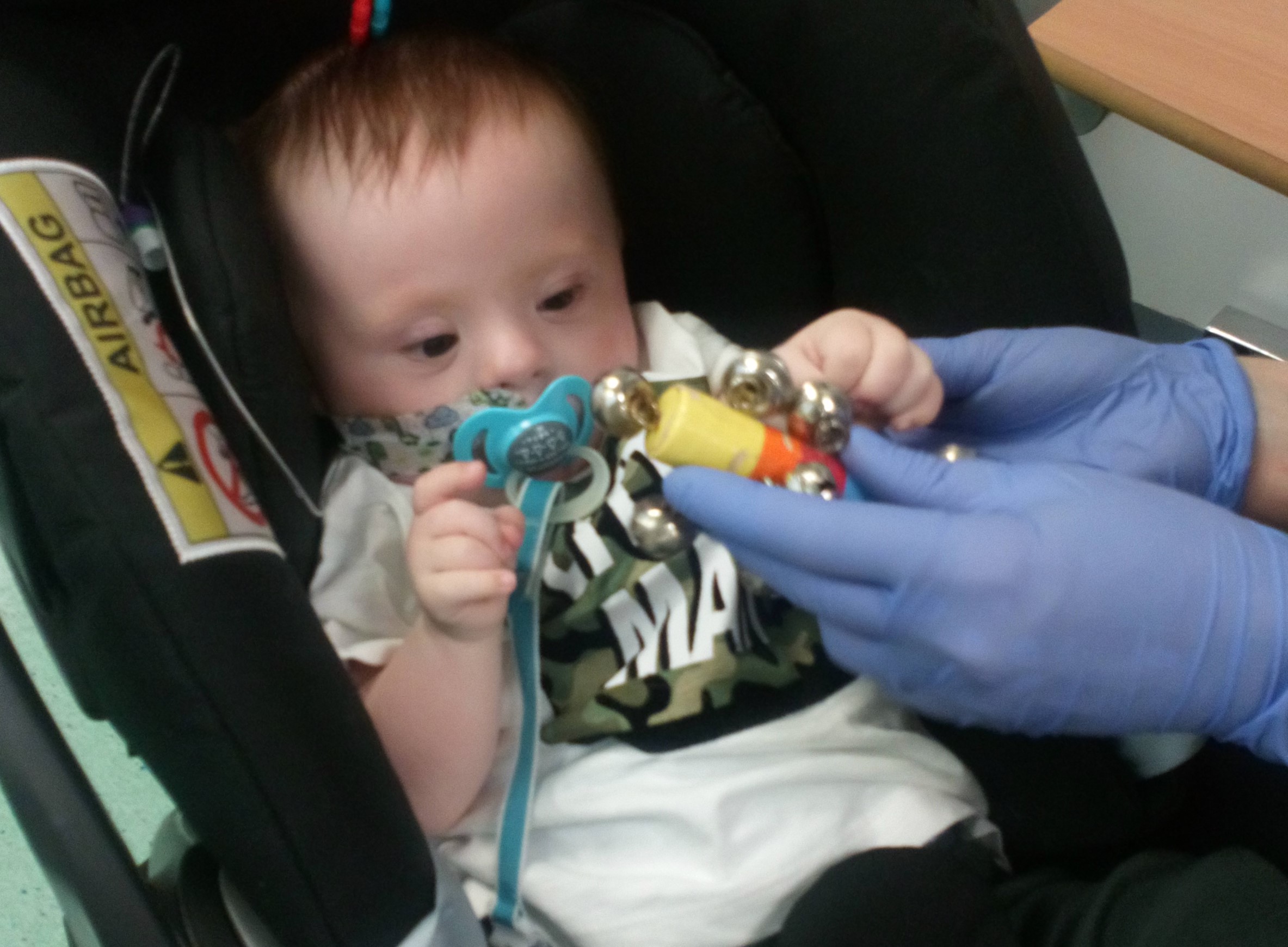 Once your baby has begun to move their arms against gravity, they may start batting toys dangled in front of them. This could be from a supported sitting position or lying on their back.
Once your baby has begun to move their arms against gravity, they may start batting toys dangled in front of them. This could be from a supported sitting position or lying on their back.
- Start them off by assisting their hand to bat a toy in front of them.
- Once your baby has an idea of what happens when they bat a toy, they will feel more motivated to try it again.
- It is great to use a toy that jingles or flashes for extra motivation.
Hands to feet
Encouraging your baby to play with their feet is a great way to help them develop their abdominal strength, which is really important for initiating a roll.
- Start by assisting the movement until your baby can take over. You may also do this with your baby in side-lying position to eliminate gravity.
- By encouraging diagonal hands and feet to come together, you will be encouraging your baby to turn their body.
- Babies often love to play with their feet – this is how they are discovering their body – but you can also encourage it by putting special rattle toys on their ankles or feet.
Share your feedback
Tell us what you think of the information on this page. Complete a short, anonymous survey on Microsoft Forms.
